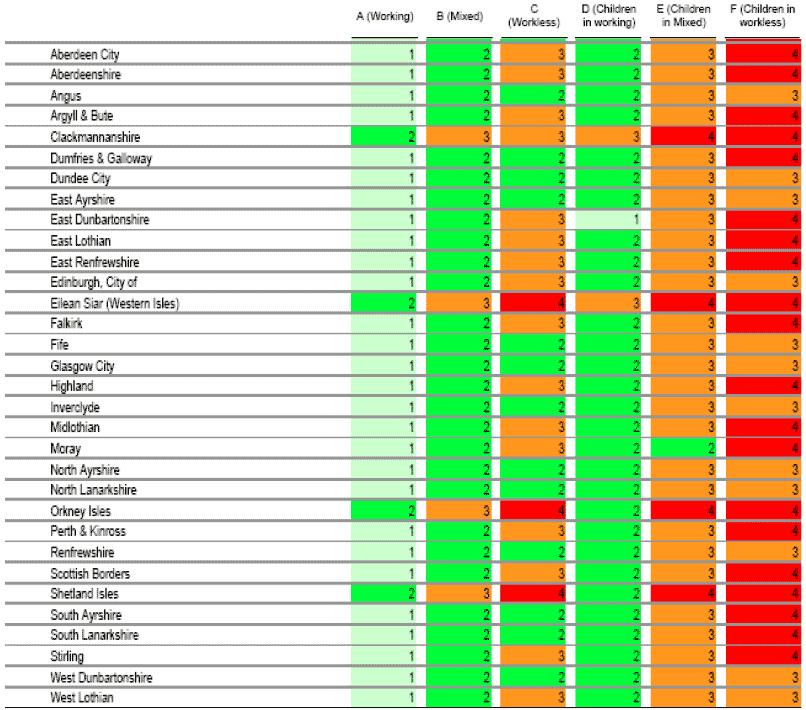Work and Worklessness among Households in Scotland 2009
Work and Worklessness among households in Scotland, 2009
Annex A. Background Information
1. The APS household datasets are produced annually and are available from 2004 covering the period January to December of each year.
2. The APS household datasets are designed specifically to provide family and household labour market statistics for local areas and for small sub-groups of the population across the UK. The household datasets are different to the APS cross-sectional (person) datasets which provide labour market statistics at an individual / person level.
3. The APS household datasets include all the variables on the LFS and APS person datasets, except for the income variables. They also include key family and household level derived variables. These variables allow for an analysis of the combined economic activity status of the family or household.
Reliability Measures
4. As the APS is a sample survey of households, the estimates are subject to a degree of error. The difference between an estimate and its true value is the sampling error. The actual sampling error for any estimate is unknown but we can estimate, from the sample, a typical error, known as the standard error. This provides a means of assessing the precision of an estimate. The lower the standard error, the more confidence there is that the estimate is close to the true value.
5. One way to express the standard error is as a percentage of the estimate itself. This is referred to as the relative standard error ( RSE) of the estimate. Larger sample sizes represent more of the population and tend to have smaller RSEs, and the smaller the RSE, the more reliable the estimate. As the sample size gets smaller, estimates tend to have higher standard errors and are therefore less reliable.
6. Table B1 provides an outline of the reliability of APS household estimates for different types of working-age households by local authority. No actual estimates or standard errors are given as the aim is purely to assess reliability of estimates and give an idea of which estimates can be used at which geographical level. Estimates are colour-coded and scored accordingly:

Table B1: Ready Reckoner for reliability of key household series by local authority

Source: Annual Population Survey (Jan-Dec) Household Datasets
Notes:
A: Working-age households where all members aged 16 or over are in employment
B: Working-age households containing both working and workless members
C: Working-age households where no one aged 16 or over is in employment
D: Children living in a working-age household where all members aged 16 or over are in employment
E: Children living in a working-age household containing both working and workless members
F: Children living in a working-age household where no one aged 16 or over is in employment
1 (Light Green): 0= RSE<5. Estimates are considered precise
2 (Dark Green): 5= RSE<10. Estimates are considered reasonably precise
3 (Amber): 10= RSE<20. Estimates are considered acceptable
4 (Red): RSE=20. Estimates are not considered reliable for practical purposes
There is a problem
Thanks for your feedback